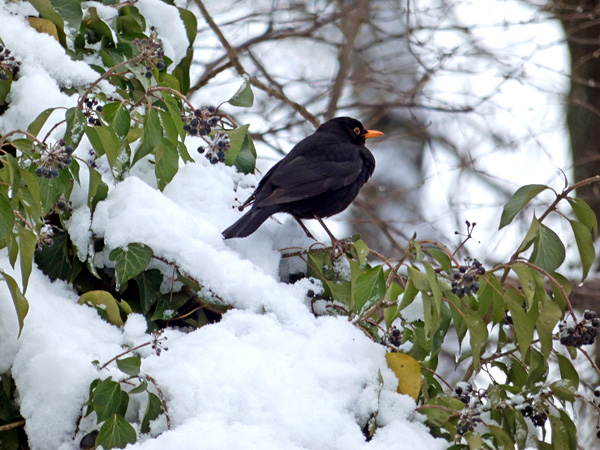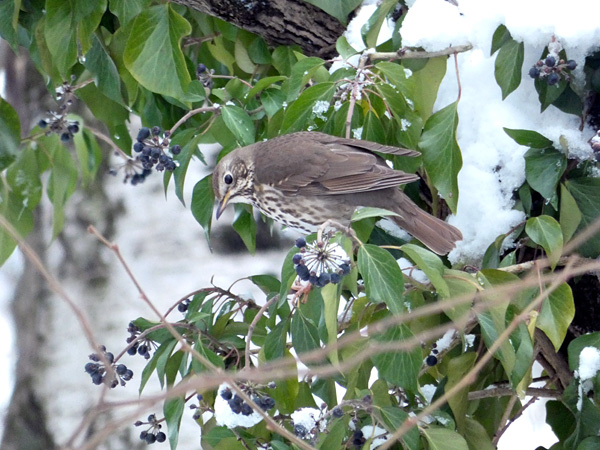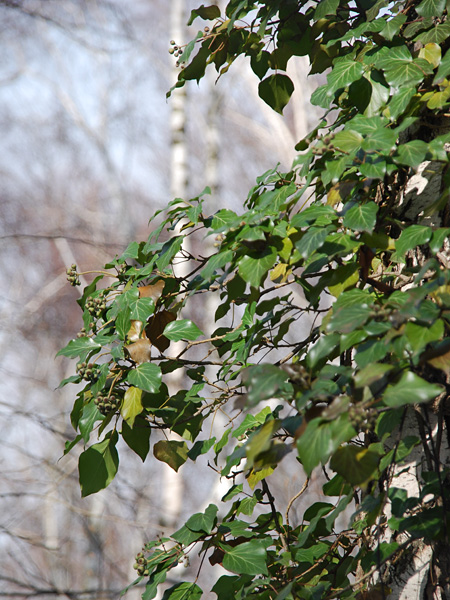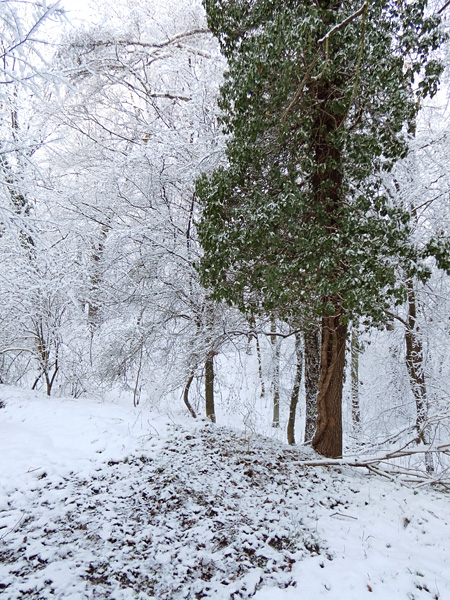Fresh fruits, hidden snacks, and safe shelters – can ivy be a micro-refuge for wintering birds in Central European forests?
In winter, birds face many difficulties resulting from unfavorable weather conditions and food shortages. These problems are particularly important in ecosystems with a simplified structure, often created as a result of human activity. Such ecosystems include commercial forests that lack arboreal microhabitats, which are crucial for many bird species.
The journal Forest Ecology and Management published an article in which a team led by Łukasz Kajtoch from the Institute of Systematics and Evolution of Animals of the Polish Academy of Sciences (of which Łukasz Piechnik from our Institute was a member) highlights the role of the common ivy Hedera helix as a microhabitat of great importance to birds during winter. The research was carried out in broadleaved forests, in the upland and submontane areas of Central Europe (Poland, Slovakia).
Scientists have shown that forest fragments with trees overgrown with vertical and dense forms of ivy (i.e. ivy vines) attract birds wintering in our region – the presence of ivy has a positive effect on their numbers, species richness, and phylogenetic diversity, with this relationship present both inside forest complexes and at their edges (in the ecotone). Why is this happening? Ivy is an evergreen vine whose fruits ripen in winter and remain on the shoots until early spring. Thus, ivy berries are one of the few available food sources for fruit-bearing birds in the forests in winter. The leafy shoots of ivy, thanks to their complex architecture, full of crevices and branching, provide a reservoir of overwintering invertebrates and seeds hidden by various animals (another potential food source). They also offer good shelter from the weather, which is especially important in stands lacking foliage in winter.
Vines such as ivy are generally rare elements in temperate zone forests, but are, as it turns out, invaluable as a driver of the diversity of forest bird communities, especially in winter. The authors of the article hope that the results they obtained will inspire the forest management service to preserve stands with dense ivy. The resumption of the protection of this species, abandoned after 2014, or at least banning the removal of trees covered with thick vines, could significantly contribute to the role of commercial forests in biodiversity conservation.
You can read more about the research results in the original article:
Kajtoch Ł., Grzędzicka E., Piechnik Ł., Wyka J., Lešo P. 2023. Evergreen ivy vines as a key element maintaining the high diversity of birds wintering in Central European forests. Forest Ecology and Management 544: 121165. DOI
The above article is the second in a series on the importance of ivy in Central European forests. We also encourage you to read the first article, which deals with the habitat preferences of ivy:
Wyka J., Piechnik Ł., Grzędzicka E., Lešo P., Dyderski M.K., Kajtoch Ł. 2023. The vertical form of the common ivy Hedera helix L. is associated with diverse and semi-natural forests in Central European highlands. Forest Ecology and Management 530: 120750. DOI

The common blackbird feeding on ivy fruit in winter.
Photo: Łukasz Kajtoch

The song thrush feeding on ivy fruit in winter.
Photo: Łukasz Kajtoch

Vertical forms of ivy in a commercial forest; Podbuczyna Forest, Trzebinia, Silesian Upland.
Photo: Łukasz Piechnik

Vertical forms of ivy in a commercial forest; Podbuczyna Forest, Trzebinia, Silesian Upland.
Photo: Łukasz Piechnik

Vertical form of ivy in a commercial forest; Podbuczyna Forest, Trzebinia, Silesian Upland.
Photo: Łukasz Piechnik

Vertical forms of ivy in a commercial forest; Bugajski Forest, Świętokrzyskie Mountains, December 2018.
Photo: Emilia Grzędzicka

Vertical form of ivy; Grajów, Wieliczka Foothills, winter 2022.
Photo: Łukasz Kajtoch